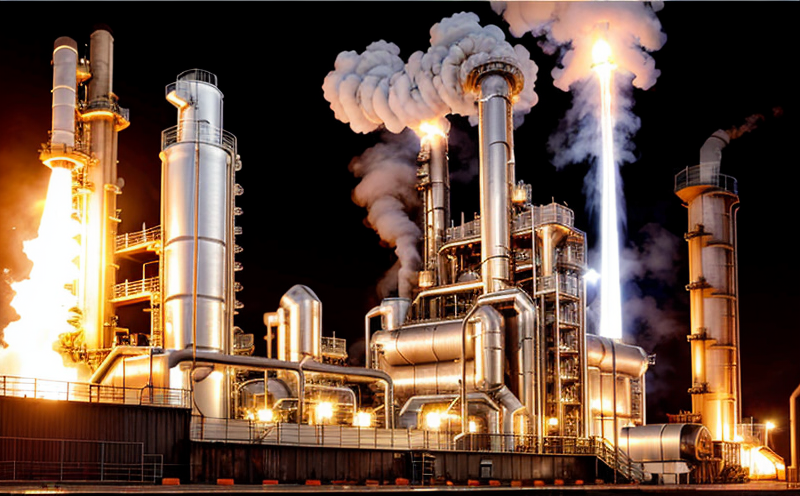ASTM E1447 Hydrogen Analysis in Titanium Alloys
The ASTM E1447 standard is a critical tool used to measure hydrogen content in titanium alloys. This testing service ensures that the integrity and quality of materials are maintained, which is essential for industries such as aerospace, automotive, and medical device manufacturing where material purity can significantly impact performance and safety.
Hydrogen embrittlement remains one of the most significant concerns when dealing with titanium alloys. Hydrogen atoms can diffuse into metal structures under specific conditions leading to reduced ductility, increased brittleness, and potential failure. ASTM E1447 provides a robust method for detecting these hydrogen levels, thereby enabling quality control teams to ensure that materials meet the required standards.
The process involves subjecting small samples of titanium alloy to controlled conditions where they are exposed to a known quantity of hydrogen. After exposure, the sample is analyzed using gas chromatography (GC). This sophisticated technique allows for precise quantification of hydrogen content within the material matrix. The results provide insights into whether the hydrogen levels are acceptable or require further investigation.
Understanding the hydrogen content in titanium alloys through ASTM E1447 testing is crucial because it helps prevent issues such as hydrogen embrittlement during processing stages like forging, welding, and heat treatment. By identifying and addressing any excess hydrogen early on, manufacturers can avoid costly rework or scrapping of parts.
The significance of this test extends beyond just preventing internal flaws; it also plays a vital role in ensuring compliance with industry standards and regulations. Aerospace-grade titanium must adhere to stringent purity requirements to ensure reliability under extreme conditions. Similarly, medical devices made from titanium need to demonstrate consistent performance across diverse environments without compromising their structural integrity.
Implementing ASTM E1447 hydrogen analysis into your quality assurance protocols can enhance product consistency while minimizing risks associated with material contamination or poor processing practices. This service not only supports operational efficiency but also contributes positively towards maintaining high standards within the metallurgical sector.
Scope and Methodology
| Step | Description |
|---|---|
| Sample Preparation | Titanium alloy samples are cut into small, uniform pieces suitable for analysis. |
| Hydrogen Exposure | The prepared samples are exposed to a controlled environment containing hydrogen gas at specified temperatures and pressures. |
| Gas Chromatography Analysis | Analyzing the sample post-exposure using GC techniques to determine hydrogen content accurately. |
| Data Interpretation | The results from GC are interpreted against established thresholds outlined by ASTM E1447 standards. |
This process ensures reliable and repeatable measurements of hydrogen levels in titanium alloys. The precision provided by this method allows for accurate identification of any anomalies that may indicate potential quality issues or areas needing improvement.
By adhering strictly to the procedures laid out in ASTM E1447, laboratories can produce consistent results across multiple batches of samples, ensuring uniformity throughout production runs. This level of accuracy is particularly important given the critical nature of titanium alloys used in various high-stress applications where even minor variations could have significant consequences.
Benefits
Implementing ASTM E1447 hydrogen analysis offers numerous advantages, including enhanced product reliability and safety. Here are some key benefits:
Improved Product Quality: Ensuring that titanium alloys meet strict purity standards helps eliminate defects caused by hydrogen embrittlement.
Cost Savings: Early detection of hydrogen-related issues prevents costly rejections or scrapping of non-compliant products during manufacturing processes.
Regulatory Compliance: Adhering to ASTM E1447 guarantees that your materials comply with relevant industry regulations and standards, reducing the risk of legal challenges.
Risk Mitigation: By regularly monitoring hydrogen content, you reduce the likelihood of unforeseen failures in critical applications like aerospace components or medical implants.
Innovation Support: The ability to precisely control and measure hydrogen levels facilitates ongoing research into improving material properties and developing new alloys with enhanced performance characteristics.
Enhanced Reputation: Consistently meeting quality benchmarks enhances your company's reputation as a leader in producing reliable titanium products.





